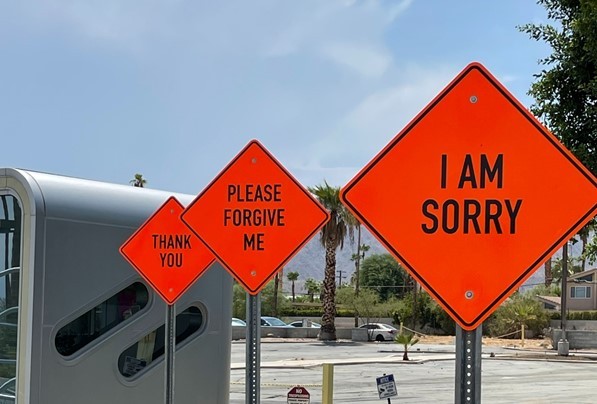As a migrant Australian Citizen, I will never forget my first introduction to the profound use of the word ‘Sorry’ in Australian culture. It was like no other I had experienced before, having worked with and lived in many varied countries and cultures internationally.
Paying my respects to our first nations people is something that is habitual now. Fast forward to now, and another instance hits the headlines, this time a different context, relating to sexual abuse, and again the response is ‘sorry’. Is this becoming a dreadful habit inherited by the British? I thought. I felt compelled to grapple with my own emotions on this subject (full disclaimer being a white, privileged, older female and dual citizen of Britain and Australia).
Negative feelings are not healthy, so instead I share my observations and thoughts through what I know to be true about change, in a lighter way, in the hope that some may hear and may even want to listen.
In my ‘day job’ I help organisations and leaders understand and not fear change, it’s what I am passionate about and have been doing for over 30 years. I also know this – I am not a doctor; I do not go out on the front line and save lives every day. I am not a scholar, I do not have all the answers and this is not about politics. It is my own, lived experience and perspective.
If this article has popped up in your busy social media feed you have a choice – continue to read it or ignore it, as I will do with your comments. 🙂
What does ‘sorry’ do?
Sorry is an acknowledgement and it’s a great start. A conversation starter. It is a helpful and necessary part of any recovery process and a practice of decency and humility. However, without a commitment to action – it ends there. It is static. It goes nowhere else. It adds no greater value. It serves to heal the pain for those saying sorry and affords those we have hurt with an opportunity for acceptance, and it is what it is– yet it doesn’t MOVE anything. It does not prevent us from repeating our mistakes or opening new wounds in the future.
Moving beyond being sorry
A strategy for change has clarity of direction, it moves us towards hope of something better in the future – it pulls us forward – has purpose, principles, and intention to move beyond the current situation. It looks at multiple perspectives and understands the impacts. The strategy explains how we will deploy the resources and power at our disposal in service of this new direction.
On the flip side of the coin, a strategy is not an action plan either. A dossier containing multiple plans and actions, handed down as a document, is not a strategy. Here’s why:
1) Action plans do not solve problems, they implement solutions. Change is a process, trying to lay down all the actions before establishing the intent – the strategy – is like being told every step in how to service a car without first knowing what a car is, or why you would even want one! – Its overwhelming, and in reality, if we don’t see any relevance to ourselves at the time of reading a document – that car servicing manual goes up on the shelf – unactioned.
2) It’s a document. Period. A report. Like a school report. It has no responsibility within itself to do anything – it requires humans to connect the dots and care enough to venture beyond reading, to take at least one of the actions. Take a brave step forward without fear of reprisal for getting it wrong, or not going far enough. Time and context move on. Take no action and the document becomes worthless.
Accountability for “sorry-ness”
When it comes to ‘sorry’, in my view, I see two options:
Either
1) Stop saying sorry if you never take action to change (something I learned from my Mum when I was a kid!) – at least that is an authentic response. Crying wolf doesn’t fly – humans are too good at sniffing that rat out. Awareness of our impact is needed before change is possible. It’s a life-long practice of humility. It’s easy to become that child again, or to say sorry out of habit or requirement, rather than with intent for change.
Or
2) Say sorry only when and if you can say ‘I’m sorry AND.. here’s what is going to change” – that lays down commitment to walk a different path. Change requires thoughtful yet immediate action, one foot forward down a different path, effort to try something new. That something may not always work out as expected and that’s part of the change journey – it has highs and lows.
To move beyond “sorry-ness”, we all need a Strategy for Change – a new path to tread on, be that at a personal, workplace, or society level.
Will it go smoothly? ..will it heck! – but it will take you forward one brave step at a time.
Be a little braver.




